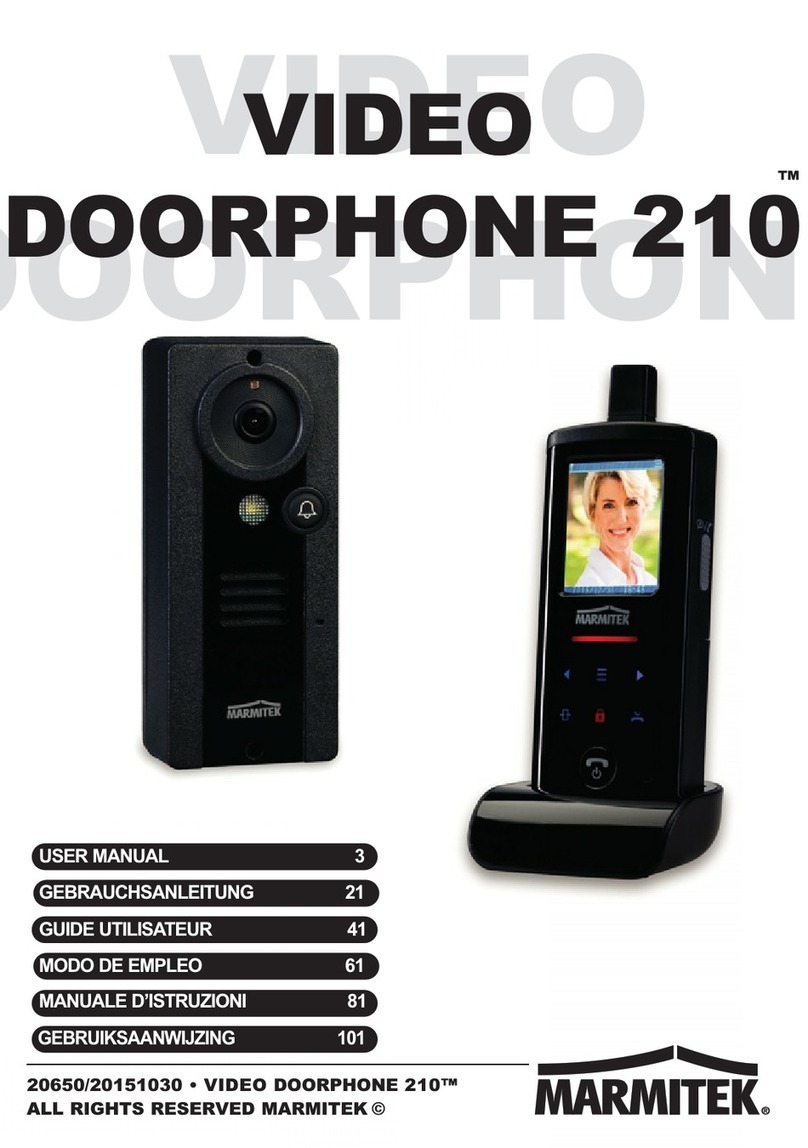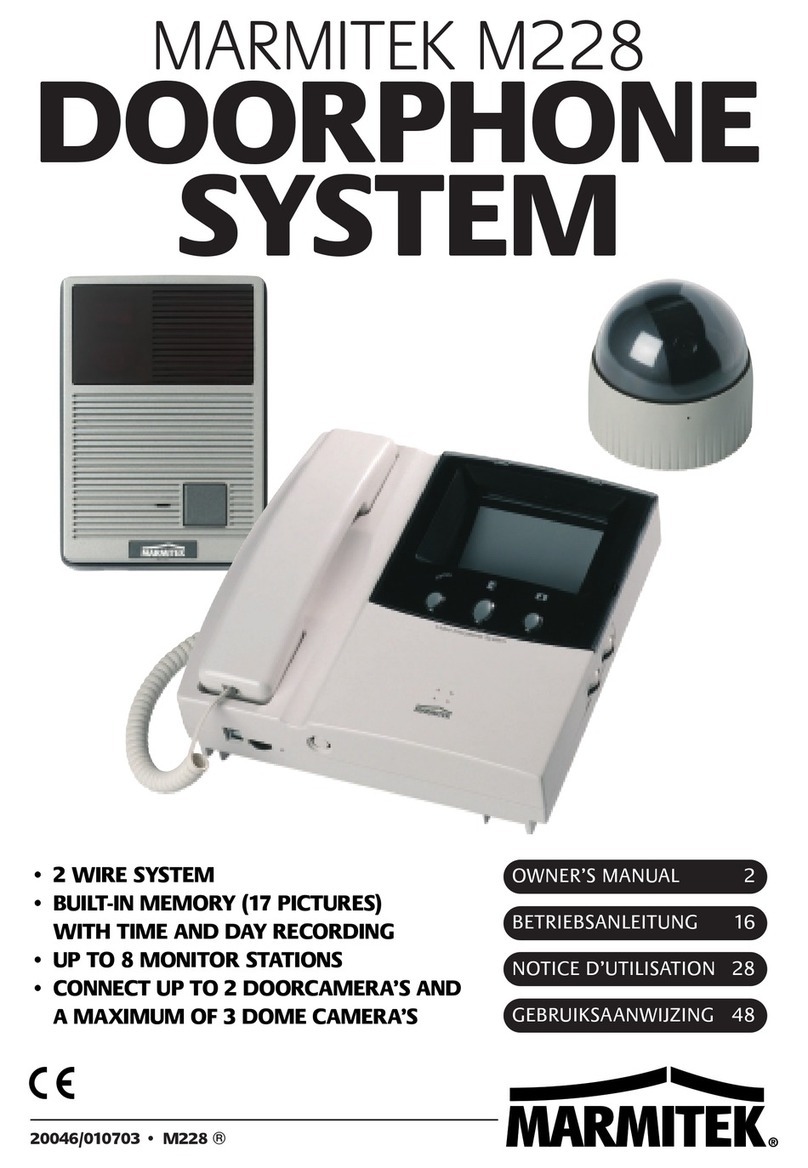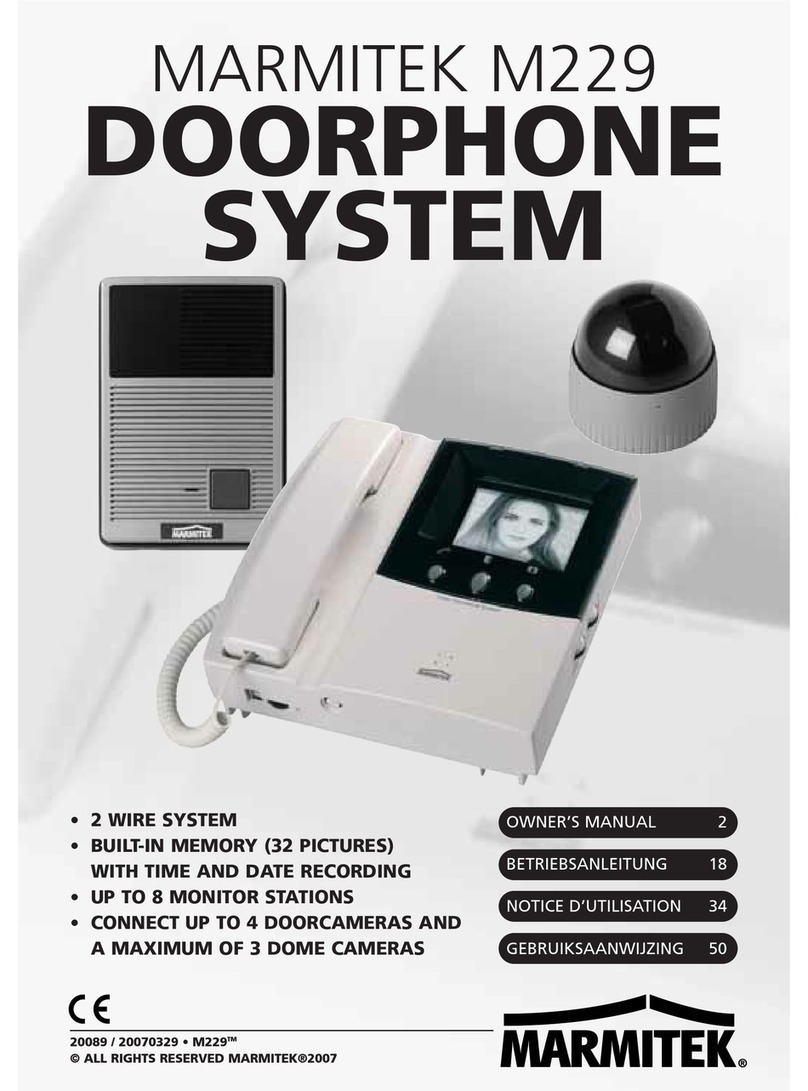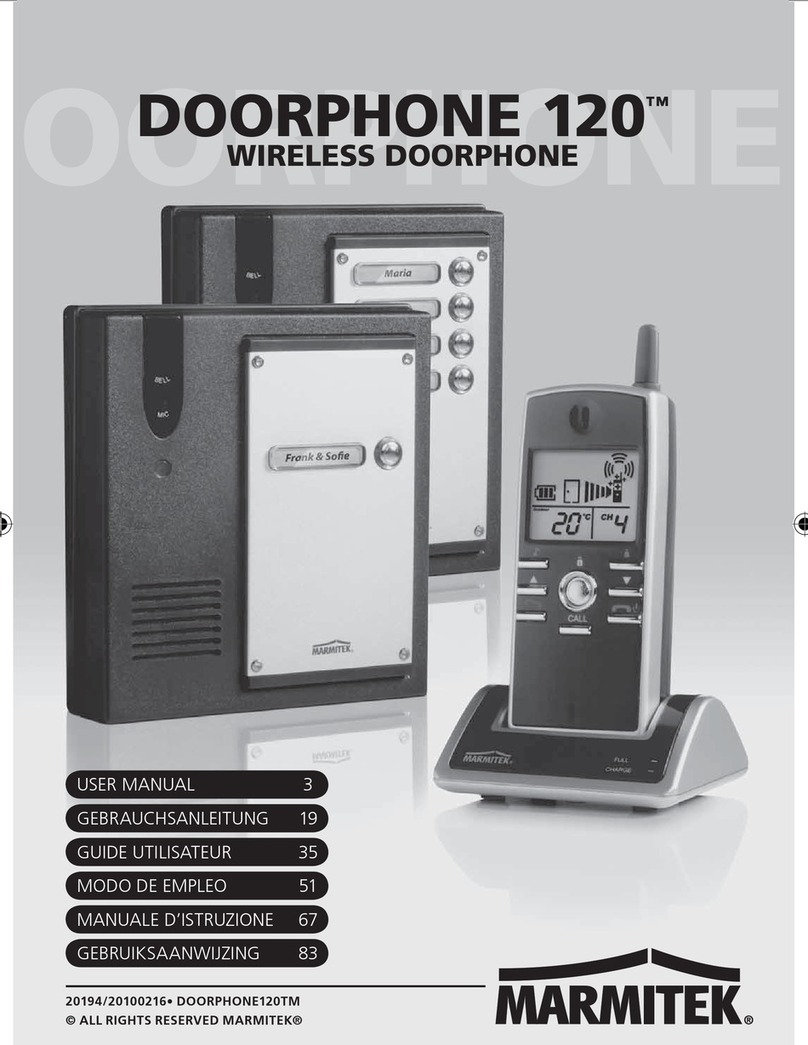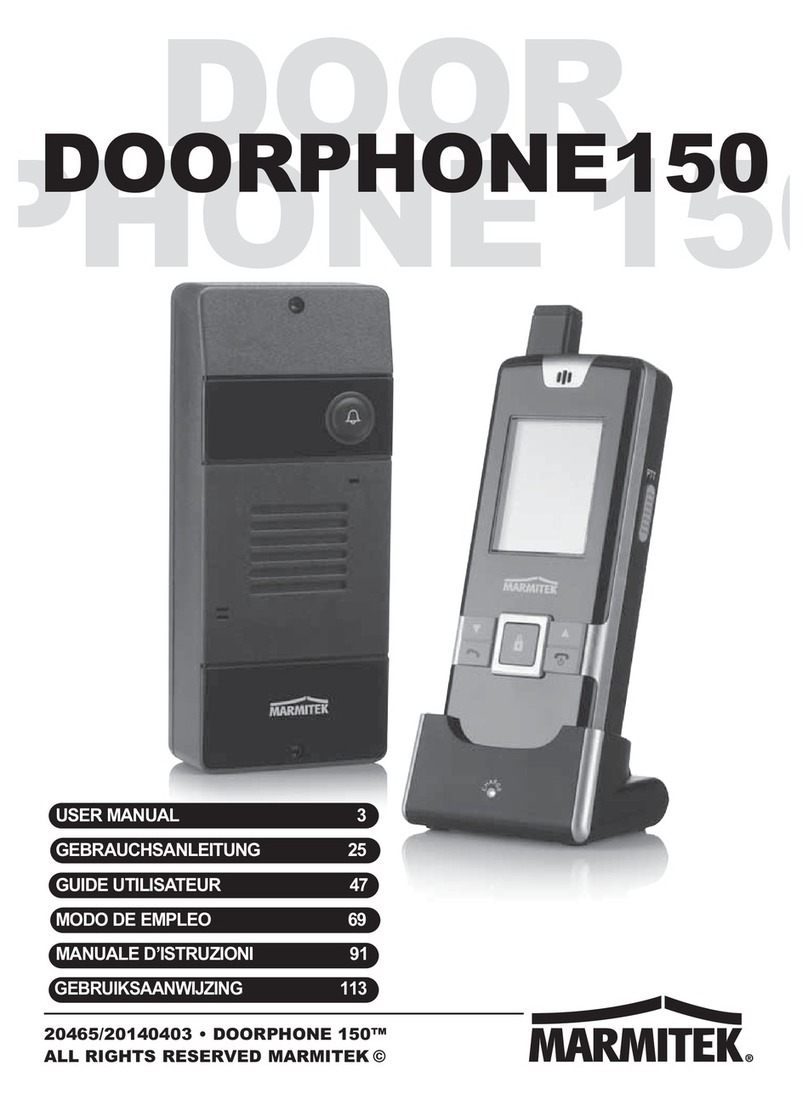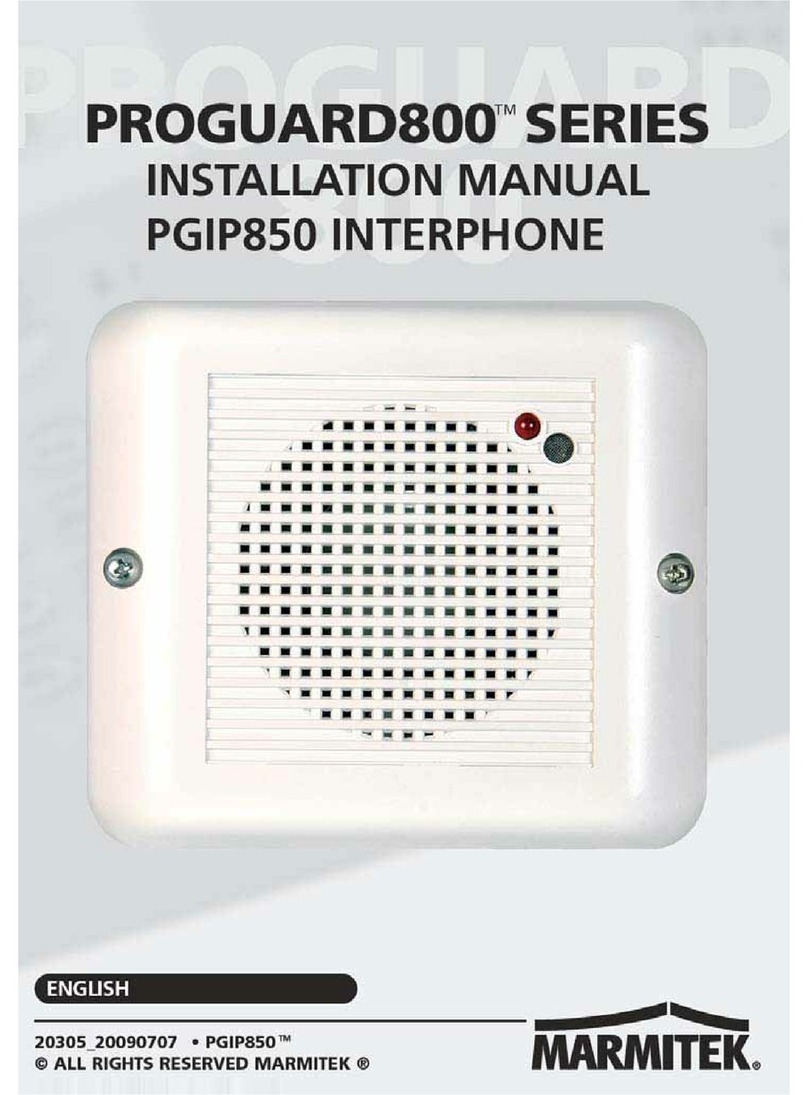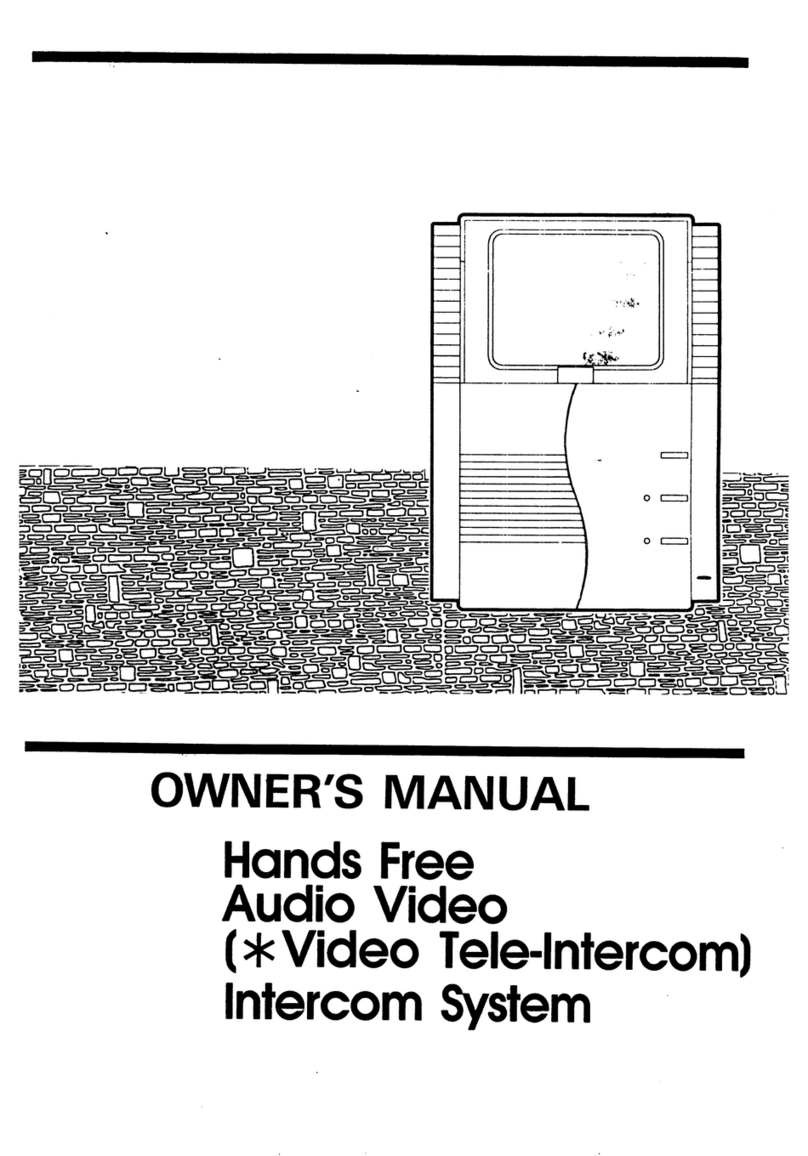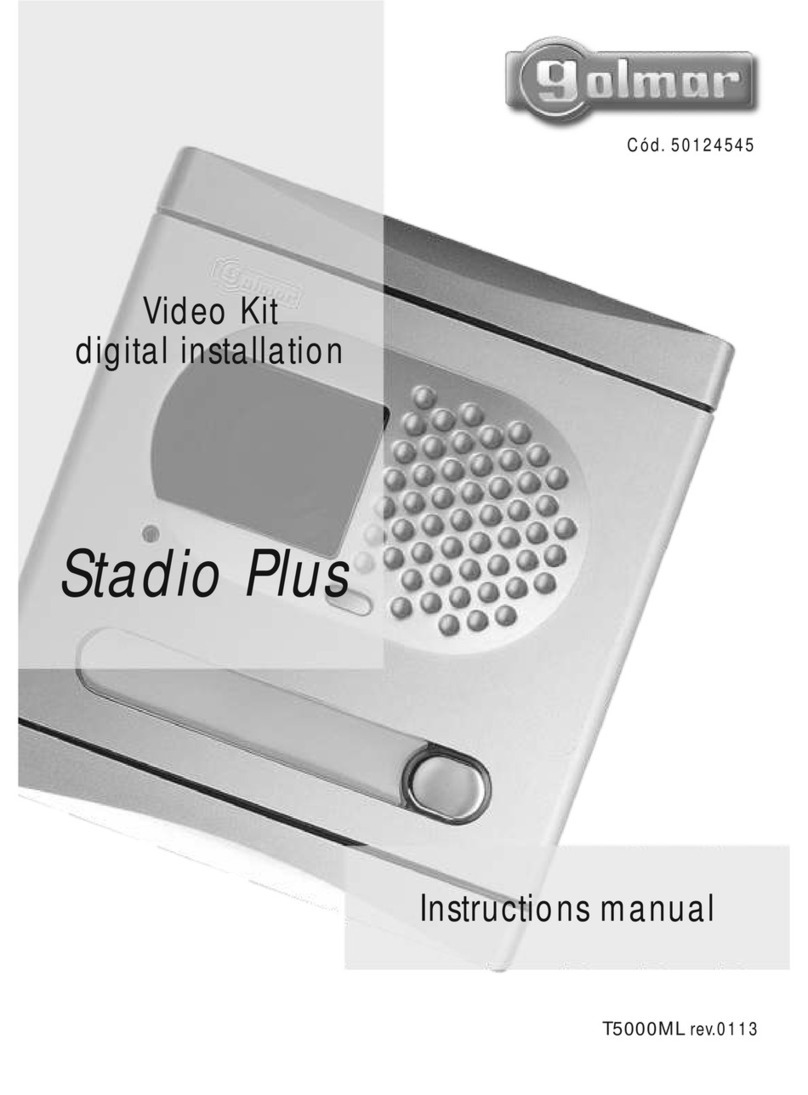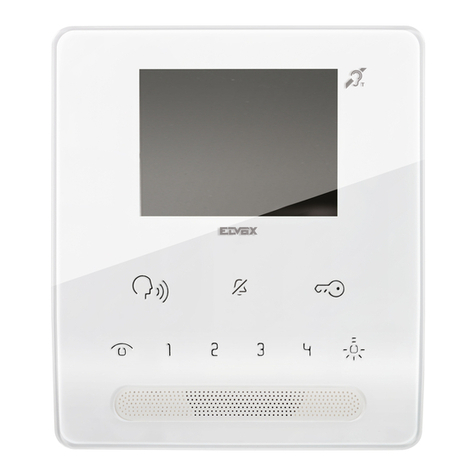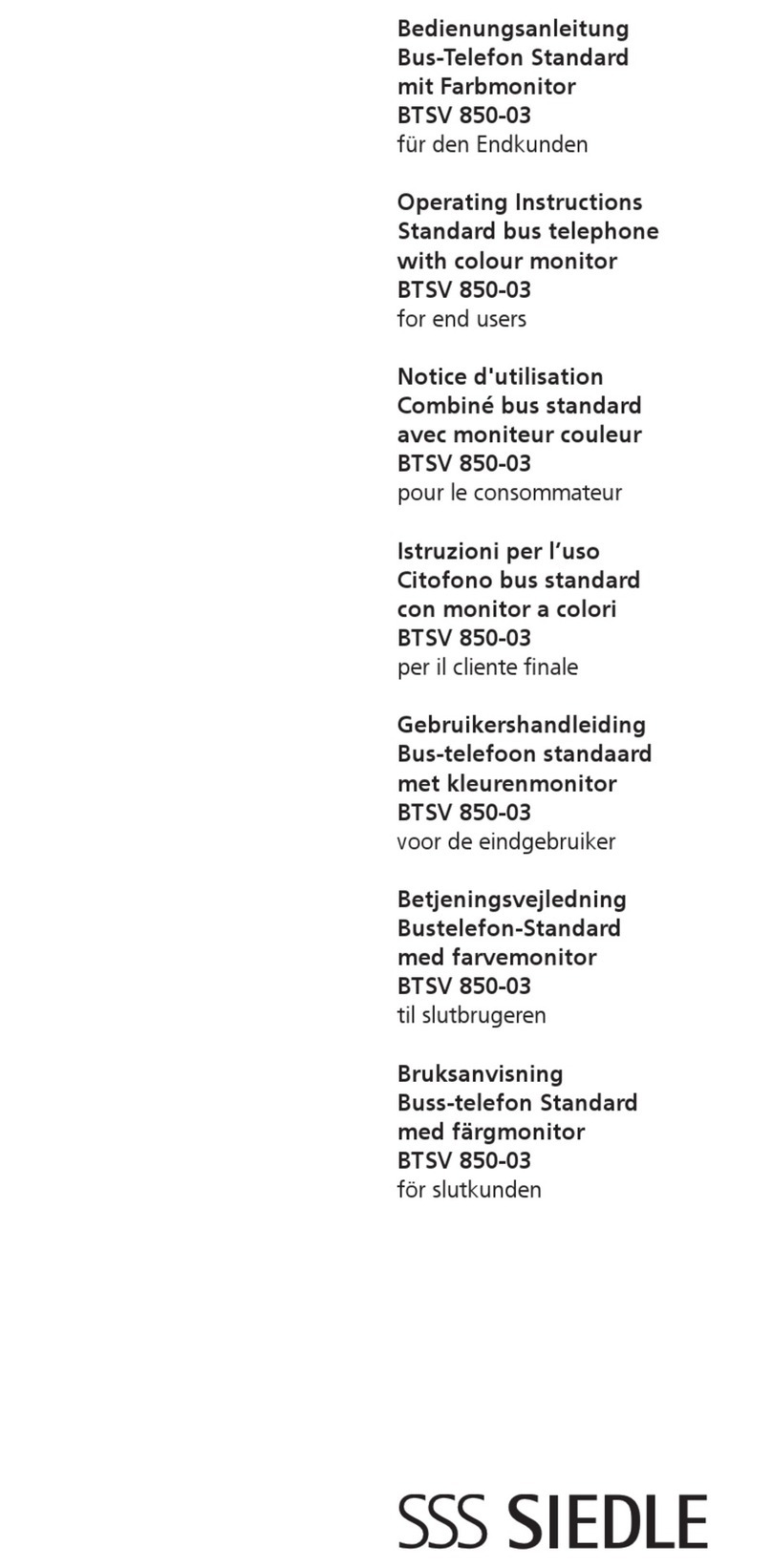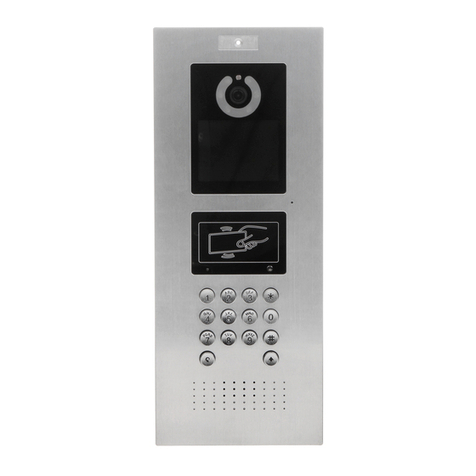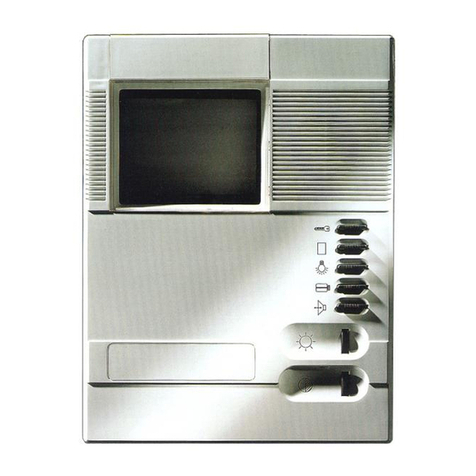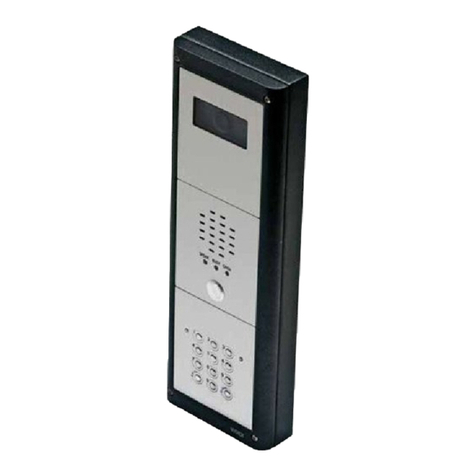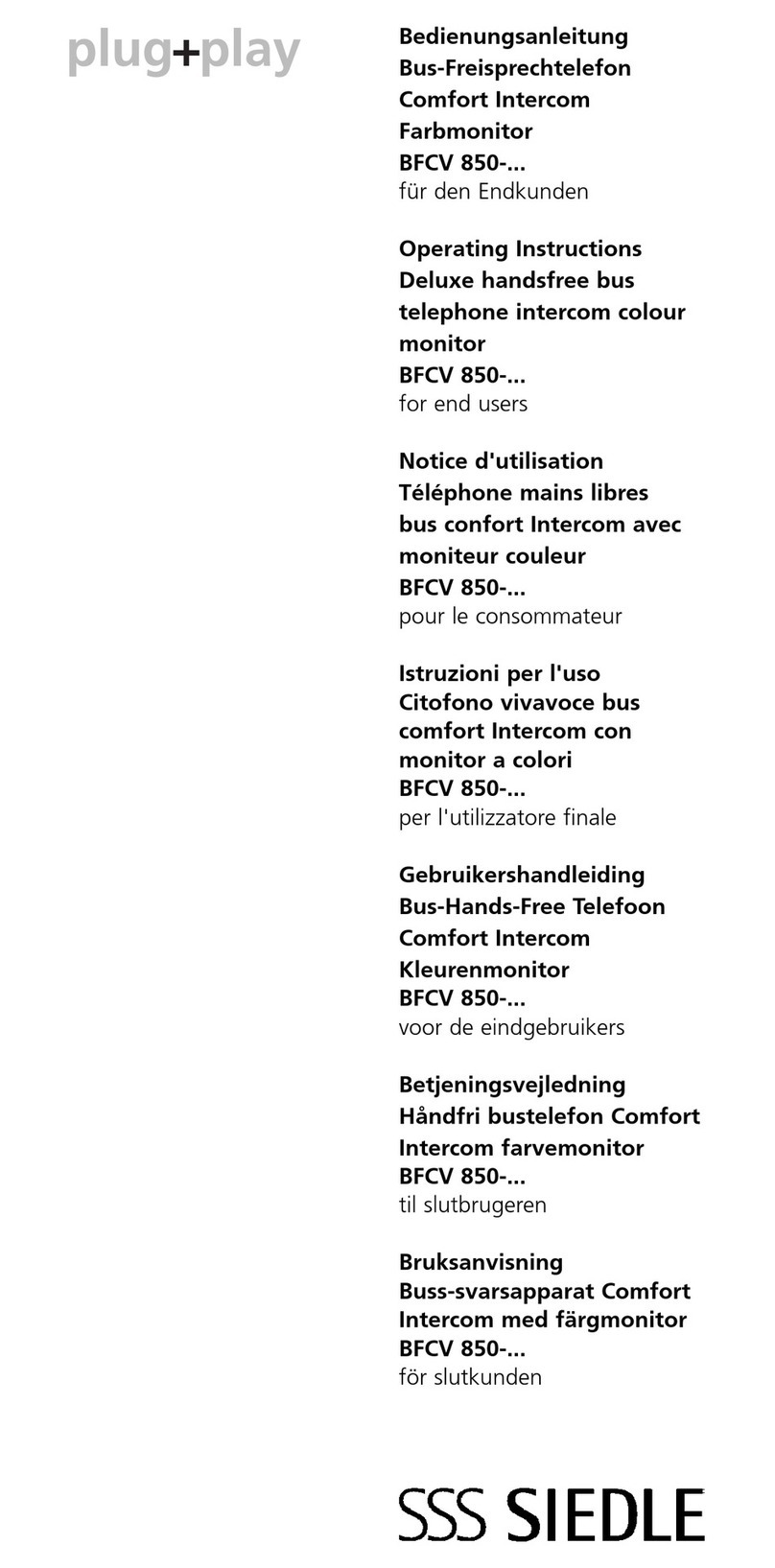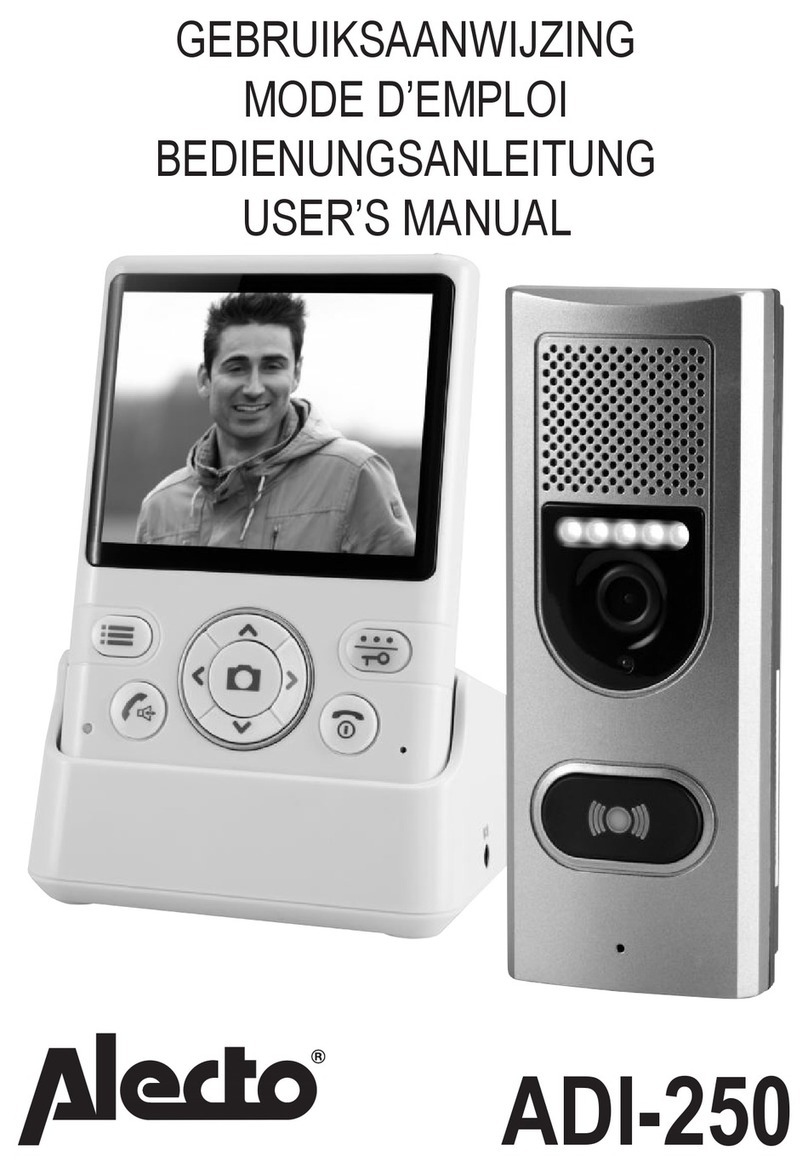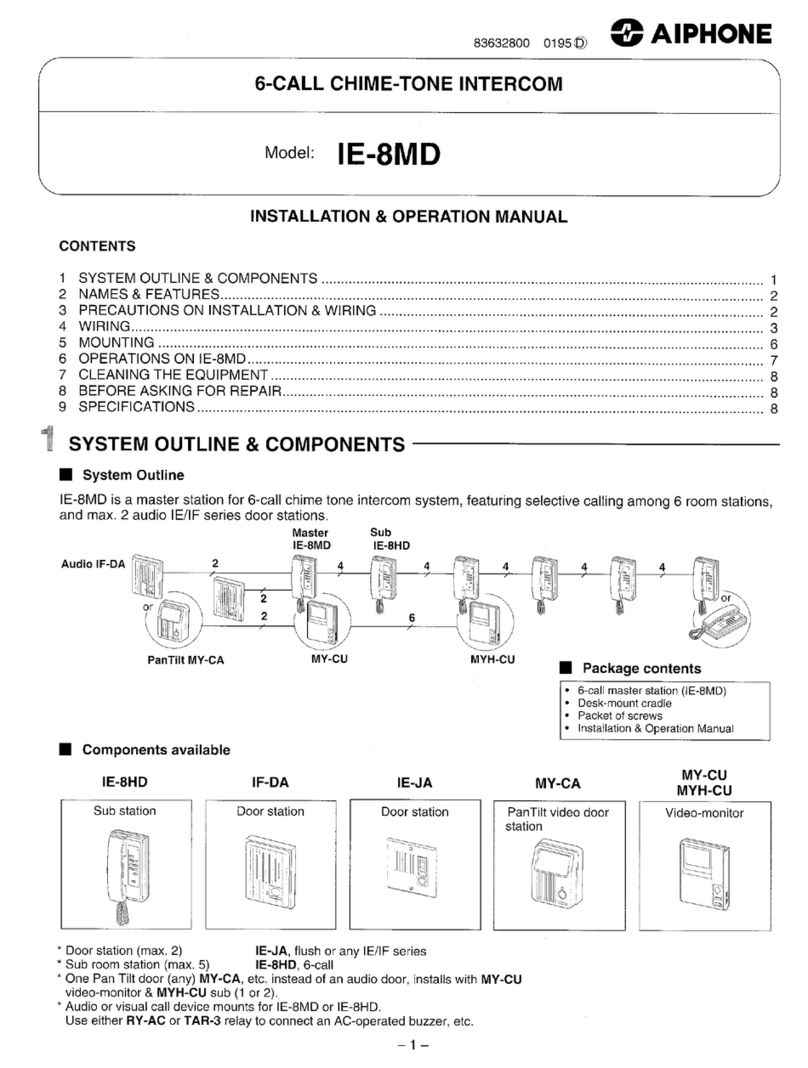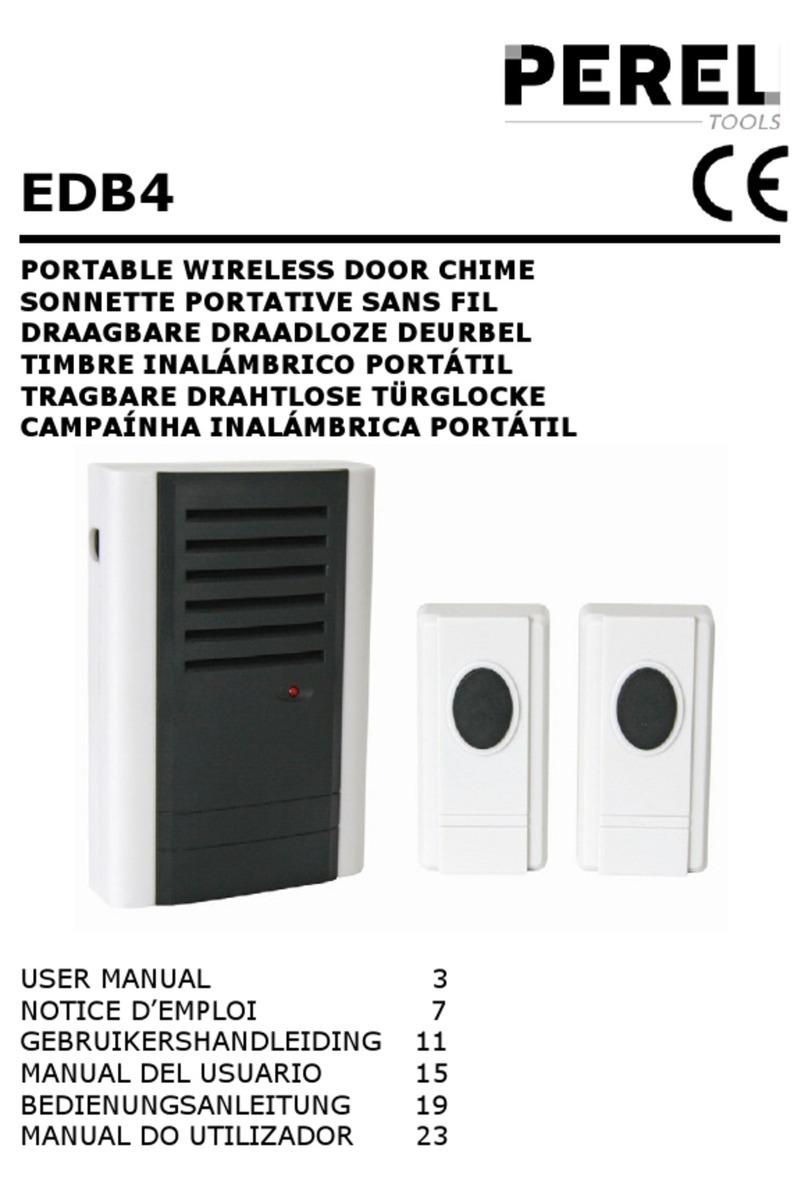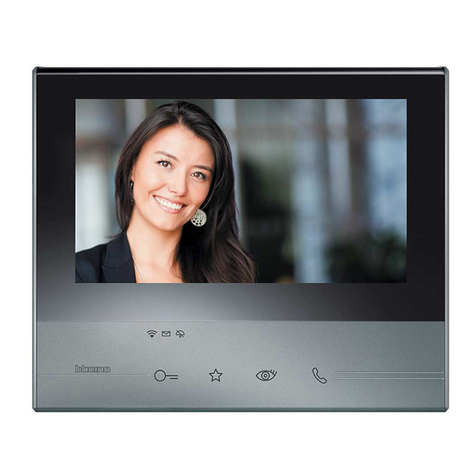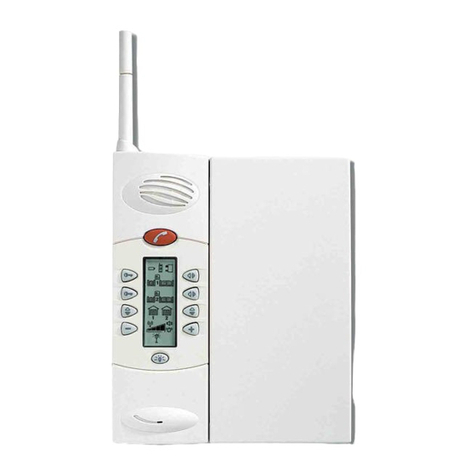SICHERHEITSHINWEISE
• Auf der Verdrahtung Ihrer elektrischen Anlage steht lebensgefährliche 230V Netzspannung.
Schließen Sie das Modul niemals unter Spannung an. Schalten Sie den Hauptschalter aus,
bevor Sie mit der Installation beginnen.
• Um Kurzschluss vorzubeugen, dieses Produkt bitte ausschließlich innerhalb des Hauses und
nur in trockenen Räumen nutzen (ausgen. der Außenkamera selbst). Setzen Sie die
Komponenten nicht Regen oder Feuchtigkeit aus. Nicht neben oder nahe eines Bades,
Schwimmbades usw. verwenden.
• Schließen Sie den Netzadapter erst an das Stromnetz an, nachdem Sie überprüft haben,
ob die Netzspannung mit dem angegebenen Wert auf den Typschildern übereinstimmt.
• Schließen Sie den Netzadapter oder die Netzschnur niemals an, wenn diese beschädigt sind.
Nehmen Sie in diesem Falle mit Ihrem Lieferanten Kontakt auf.
• Setzen Sie die Komponente Ihres Systems nicht extrem hohen Temperaturen oder starken
Lichtquellen aus.
• Das Produkt niemals öffnen: Das Gerät enthält Bestandteile mit lebensgefährlicher
Stromspannung. Überlassen Sie Reparaturen oder Wartung nur Fachleuten.
• Bei einer zweckwidrigen Verwendung, selbst angebrachten Veränderungen oder selbst
ausgeführten Reparaturen verfallen alle Garantiebestimmungen. Marmitek übernimmt bei
einer falschen Verwendung des Produkts oder bei einer anderen Verwendung des
Produktes als für den vorgesehenen Zweck keinerlei Produkthaftung. Marmitek übernimmt
für Folgeschäden keine andere Haftung als die gesetzliche Produkthaftung.
1. Einführung
Herzlichen Glückwunsch zum Erwerb vom Marmitek DoorGuard 100. Mit diesem Video-
Türtelefon können Sie jederzeit (auch unbemerkt) zunächst einmal schauen und hören, wer
an Ihrer Tür steht, bevor Sie sich entschließen die Tür zu öffnen. Die Kamera ist in der
schmalen Türklingel angebracht und gibt eine gute Bildqualität, sogar im Dunkeln. Die
Türkamera kann durch seine Schmalheit problemlos am Türrahmen montiert werden. Sie
brauchen also keine Löcher in (zweischalige) Wände an zu bringen.
2. Verpackungsinhalt
• 1 Monitor mit Bildschirm
• 1 Wandplatte für den Monitor
• 1 Türklingel mit Kamera
• 1 Wandhalter
• 1 Sonnen- und Regenschutz
• 10 Meter Verlängerungskabel
• verschiedene Befestigungs- und Schraubmaterialien
• diese 4-sprachige Gebrauchsanleitung
3. Wie funktioniert es?
Ein Besucher klingelt (mit der Klingel der Türkamera) und Sie hören einen Ding-Dongton. Bild
und Ton des Besuchers werden direkt auf dem Monitor wiedergegeben. Wenn Sie mit dem
Besucher kommunizieren möchten, dann können Sie den Hörer abnehmen und mit Ihrem
Besucher reden. Wenn Sie ein elektrisches Schloss montiert haben (optional im Fachhandel
erhältlich) können Sie die Tür auch fernbedient öffnen.
DEUTSCH
9DOORGUARD 100
